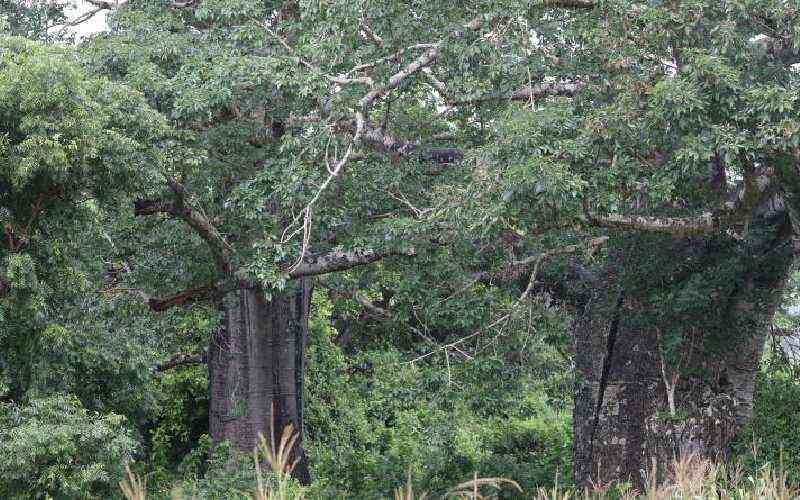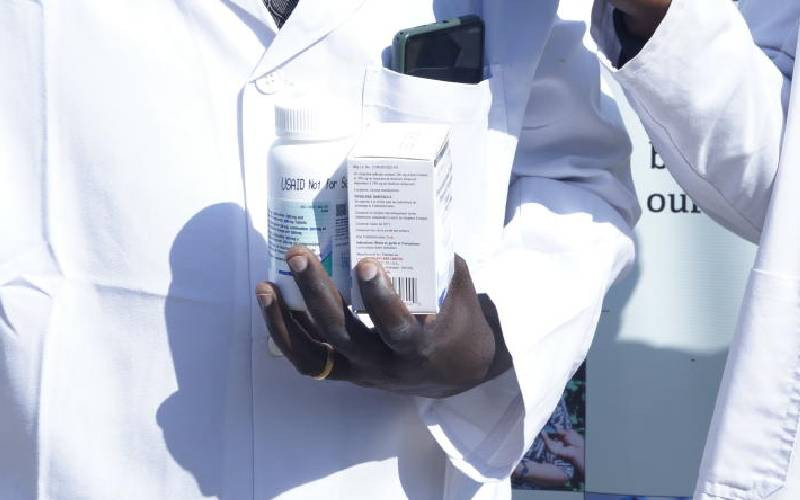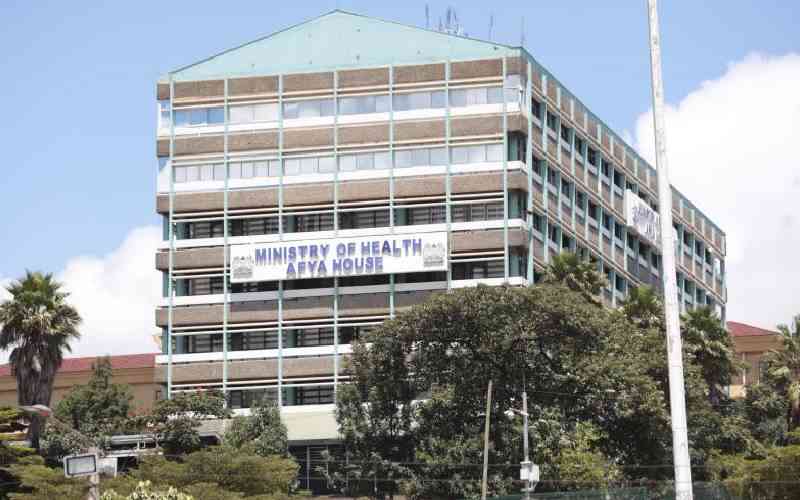
A Baobab tree in Mavueni, Kilifi County. [Kelvin Karani, Standard]
Traditionally known for its Mabuyu fruits, baobab tree has been a source of food and medicine.
Baobab powder from dried and ground fruit is rich in Vitamin C and fibres, while baobab seed oil is used in cosmetic products. Local communities utilise baobab stem fibres for making rope, fruit shells as fuelwood, leaves as vegetables and livestock fodder as well as jam and juice from fruit pulp.
The global markets are now marketing baobab powder as 'super food'. In 2020, baobab powder alone was estimated to be valued at Sh880 billion ($7.2 billion).
It is estimated that the global baobab powder market will reach Sh1.2 trillion ($10.2 billion) by 2027.
According to the Global Strategic Business Report on baobab powder, baobab powder market revenue is expected to grow with the demand from millennials and emerging markets.
"In the changed post-Covid-19 business landscape, the global market for Baobab Powder estimated at $7.2 billion in the year 2020, is projected to reach a revised size of $10.2 billion by 2027," the 2022 report noted.
Data from the African Baobab Alliance showed that the export of the powder reached 450 tonnes in 2017 and is forecasted to reach as much as 5,000 tonnes by 2025.
Baobab is native to the African continent, typically found in sub-Saharan African countries. In Kenya, it grows in several counties including Kitui, Kilifi, Kwale, Taita Taveta, Makueni, Tharaka Nithi, and Lamu. Local communities utilise baobab leaves, pulp, and seeds as a source of food
While Madagascar is also home to several other species of baobab, they are considered novel foods and cannot be sold in Europe. However, the African baobab that is native to Sub-Saharan Africa is the only species authorised on the European market.
The tree is native to Senegal, Zimbabwe, South Africa, Ghana, Benin, Kenya and Sudan, with this being a common strength across all of these countries.
Zimbabwe is currently one of the leading producers of baobab in the world tapping into the European market. Other countries with established sales of baobab in the European markets include South Africa, Ghana, Senegal, Benin and Sudan.
In 2021, the Forestry Commission of Zimbabwe chose the baobab as the tree of the year in a move to increase awareness of the country's 5 million baobab trees. In its efforts to market the species, the country has an established commercial baobab production industry, a reason the country has an edge on large orders on the European market.
While other African countries are exploiting their potential in the export market of the products, Kenya, is yet to fully exploit its potential.
Dr Patrick Maundu, an ethnobotanist at the National Museums of Kenya, said while baobab trees are important cultural heritage they are also important biodiversity. Baobabs, he said, are among the oldest trees in the country that should be protected.
Kilifi, for example, he said, hosts one of the largest baobab trees estimated to be between 1500 and 1600 years old.
"The biggest challenge in the country is that we do not have baobab regulations. There is a need for the formation of policies on baobab that will control the cutting of baobab trees and streamline the harvesting and marketing of its products in the global markets," Dr Maundu said.
Kenya, he said, has the potential to come up with and streamline the baobab production industry as well as create awareness of its benefits.
"Here in Kenya, baobab is a super food. Each part of the tree is useful from the leaves that are consumed as vegetables, to the powder and oil that is gold to the global markets. There is need to regulate the cutting down of these trees and there is need for the return of the Chief's Act to help in controlling the cutting of old trees from the village level," Dr Maundu added.
It is estimated that a single baobab tree can produce over 1,500 baobab fruits per year.
According to Centre for the Promotion of Imports from developing countries (CBI), Western Europe, particularly the UK, Germany, France, the Netherlands, Italy and Spain, offer the most opportunities to baobab exporters in developing countries
"These countries have a strong and growing natural health product industry, well-developed organic markets, as well as some of the largest consumer markets in Europe. The UK and Germany are home to several producers of baobab products, most of which are organic-certified," CBI noted.
China is forecast to reach a projected market size of $2.1 Billion (Sh 256 billion) by 2027.
 The Standard Group Plc is a multi-media organization with investments in media platforms spanning newspaper print
operations, television, radio broadcasting, digital and online services. The Standard Group is recognized as a
leading multi-media house in Kenya with a key influence in matters of national and international interest.
The Standard Group Plc is a multi-media organization with investments in media platforms spanning newspaper print
operations, television, radio broadcasting, digital and online services. The Standard Group is recognized as a
leading multi-media house in Kenya with a key influence in matters of national and international interest.





















